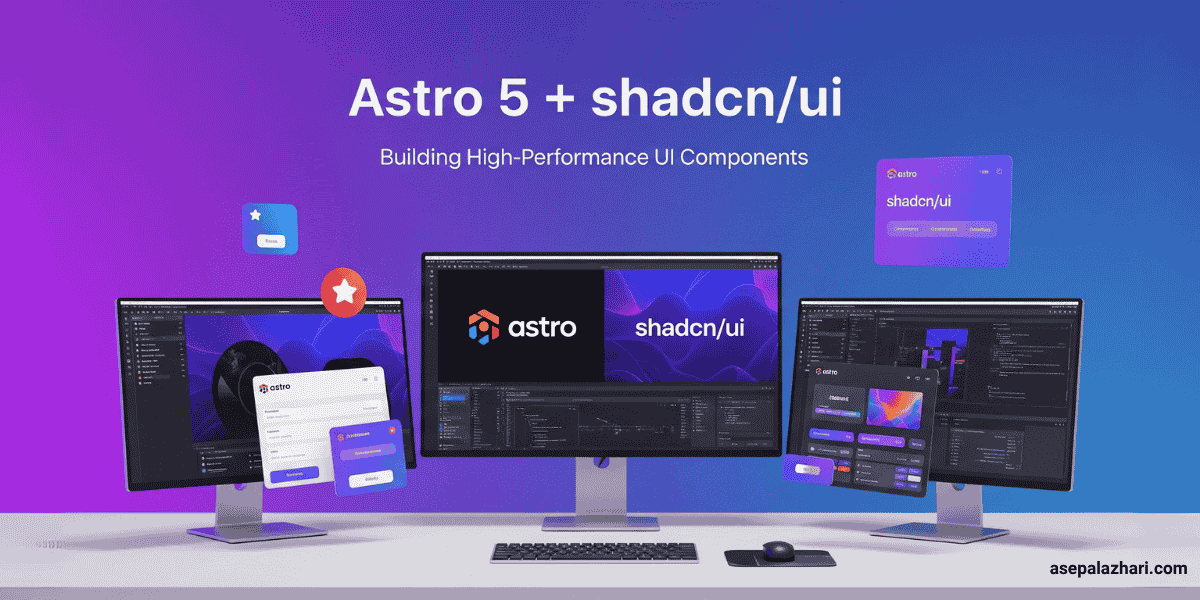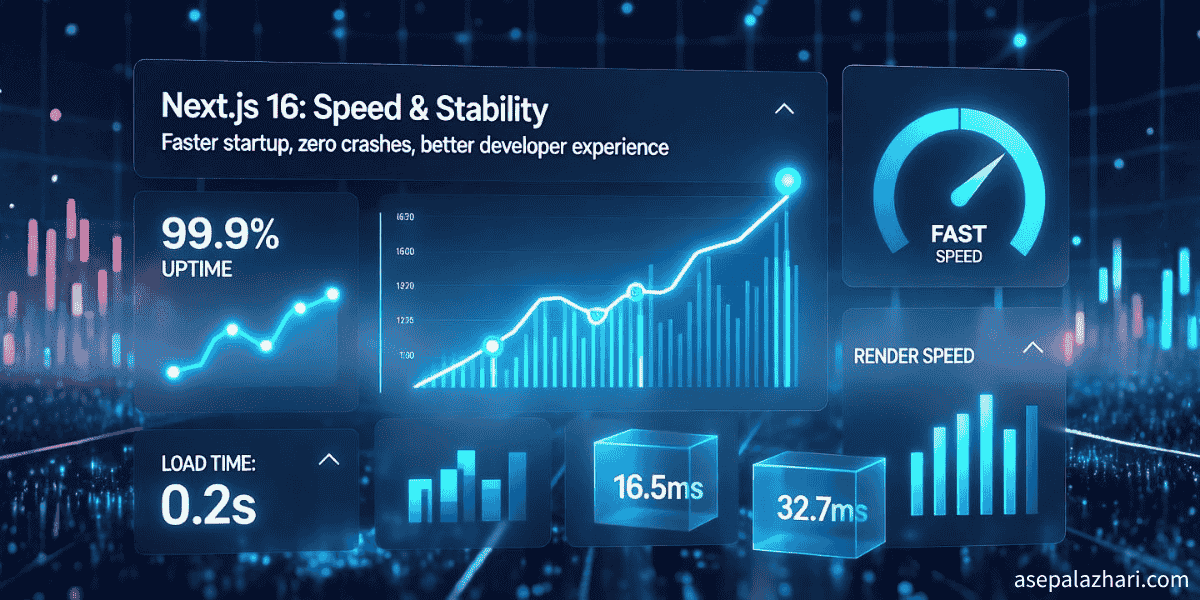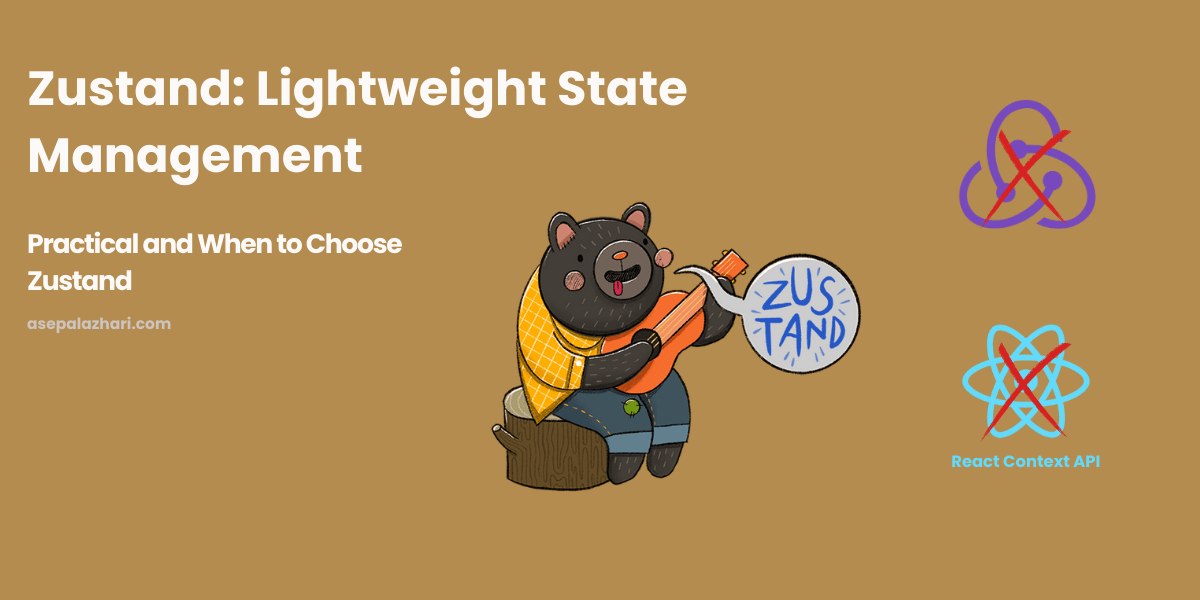Astro & shadcn/ui: A Guide to Building High-Performance UI Components
Build high-performance UIs with Astro and shadcn/ui. This guide covers seamless integration, component architecture, and key optimization techniques.

The Quest for the Perfect UI Framework: Why I Chose shadcn/ui for Astro 5
As a developer who’s been building web applications for years, I’ve witnessed the evolution of UI frameworks from jQuery plugins to modern component libraries. With the latest versions of Astro, I found myself at a crossroads: should I stick with traditional CSS frameworks, or embrace the component-driven approach that has dominated React development?
The turning point came when I was working on a client project that demanded both exceptional performance and a rich user interface. The client needed a marketing website with interactive elements, but loading speed was crucial for SEO and user experience. Traditional React-heavy solutions felt overkill, while pure CSS frameworks lacked the sophisticated components modern users expect.
That’s when I discovered the powerful combination of Astro and shadcn/ui. This pairing offers the best of both worlds: Astro’s island architecture for optimal performance and shadcn/ui’s beautiful, accessible components for rich user interfaces.
Understanding the Astro 5 and shadcn/ui Integration
shadcn/ui has become increasingly popular in the React ecosystem, and for good reason. Unlike traditional component libraries that you install as npm packages, shadcn/ui takes a different approach: you copy and paste the components you need directly into your project. This gives you full control over the code while ensuring consistency and accessibility.
With Astro’s improved React integration and support for modern JavaScript frameworks, combining these technologies has never been smoother. The key advantage lies in Astro’s ability to render components at build time when they don’t need interactivity, while seamlessly hydrating interactive components on the client side. This approach is not only great for performance but also for Search Engine Optimization (SEO), as search engines can easily crawl the static HTML content.
Setting Up Your Development Environment
Before diving into component usage, let’s establish a proper foundation. First, ensure you have Astro installed with React support:
npm create astro@latest my-astro-project
cd my-astro-project
npx astro add react tailwindNext, initialize shadcn/ui in your project:
npx shadcn-ui@latest initDuring initialization, you’ll be prompted to configure your project. Choose the following options for optimal Astro compatibility:
- TypeScript: Yes
- Style: Default
- Tailwind CSS: Yes
- Components directory: ./src/components/ui
Your astro.config.mjs should look something like this:
import { defineConfig } from "astro/config";
import react from "@astrojs/react";
import tailwind from "@astrojs/tailwind";
export default defineConfig({
integrations: [react(), tailwind()],
});Mastering Component Usage: .astro vs .tsx Files
Understanding when to use components in .astro files versus .tsx files is crucial for optimal performance. This decision impacts both loading speed and user experience.
Using Components in .astro Files
For static components that don’t require user interaction, use them directly in .astro files:
---
// Static components in Astro files
import { Button } from "@/components/ui/button";
import { Card, CardContent, CardHeader, CardTitle } from "@/components/ui/card";
---
<Card>
<CardHeader>
<CardTitle>Welcome to Our Platform</CardTitle>
</CardHeader>
<CardContent>
<p>This content is rendered at build time for optimal performance.</p>
<Button variant="outline">Learn More</Button>
</CardContent>
</Card>This approach renders the components as static HTML at build time, resulting in faster page loads and better SEO performance.
Also Read: Migrate from Bootstrap to Tailwind CSS: My Journey
Creating Interactive Components in .tsx Files
When you need state management or user interactions, create dedicated React components:
// SearchComponent.tsx
import { useState, useCallback } from "react";
import { Input } from "@/components/ui/input";
import { Button } from "@/components/ui/button";
import { Search, X } from "lucide-react";
import { Card, CardContent } from "@/components/ui/card";
interface SearchResult {
id: number;
title: string;
description: string;
}
export default function SearchComponent() {
const [query, setQuery] = useState("");
const [results, setResults] = useState<SearchResult[]>([]);
const [isLoading, setIsLoading] = useState(false);
const handleSearch = useCallback(async () => {
if (!query.trim()) return;
setIsLoading(true);
try {
// Simulate API call
await new Promise((resolve) => setTimeout(resolve, 1000));
setResults([
{ id: 1, title: "Sample Result 1", description: "This is a sample search result" },
{ id: 2, title: "Sample Result 2", description: "Another sample result" },
]);
} finally {
setIsLoading(false);
}
}, [query]);
const clearSearch = () => {
setQuery("");
setResults([]);
};
return (
<div className="w-full max-w-md mx-auto space-y-4">
<div className="flex gap-2">
<Input
type="text"
placeholder="Search articles..."
value={query}
onChange={(e) => setQuery(e.target.value)}
onKeyDown={(e) => e.key === "Enter" && handleSearch()}
className="flex-1"
/>
<Button onClick={handleSearch} disabled={isLoading} size="icon">
<Search className="h-4 w-4" />
</Button>
{query && (
<Button onClick={clearSearch} variant="outline" size="icon">
<X className="h-4 w-4" />
</Button>
)}
</div>
{isLoading && (
<Card>
<CardContent className="pt-6">
<p>Searching...</p>
</CardContent>
</Card>
)}
{results.length > 0 && (
<div className="space-y-2">
{results.map((result) => (
<Card key={result.id}>
<CardContent className="pt-4">
<h3 className="font-semibold">{result.title}</h3>
<p className="text-sm text-muted-foreground">{result.description}</p>
</CardContent>
</Card>
))}
</div>
)}
</div>
);
}Then integrate it into your Astro page with the appropriate client directive:
---
import SearchComponent from "../components/SearchComponent.tsx";
import Layout from "../layouts/Layout.astro";
---
<Layout title="Search Demo">
<main class="container py-8 mx-auto">
<h1 class="mb-8 text-3xl font-bold">Interactive Search Demo</h1>
<SearchComponent client:visible />
</main>
</Layout>Optimizing Performance with Client Directives
Astro’s client directives are your secret weapon for performance optimization. Choose the right directive based on your component’s importance and user interaction patterns:
client:load- Loads immediately (use for critical interactive elements)client:visible- Loads when component enters viewport (ideal for below-the-fold content)client:idle- Loads when browser is idle (perfect for non-critical features)client:media- Loads based on media queries (responsive loading)
Advanced Integration Patterns
As your application grows, you’ll encounter more complex scenarios. Here’s how to handle them effectively:
Form Handling with shadcn/ui
Create sophisticated forms that balance user experience with performance:
// ContactForm.tsx
import { useState, FC } from "react";
import { useForm, SubmitHandler } from "react-hook-form";
import { Button } from "@/components/ui/button";
import { Input } from "@/components/ui/input";
import { Textarea } from "@/components/ui/textarea";
import { Label } from "@/components/ui/label";
import { Alert, AlertDescription } from "@/components/ui/alert";
interface FormData {
name: string;
email: string;
message: string;
}
export default function ContactForm() {
const [submitStatus, setSubmitStatus] = useState<"idle" | "success" | "error">("idle");
const {
register,
handleSubmit,
formState: { errors, isSubmitting },
reset,
} = useForm<FormData>();
const onSubmit: SubmitHandler<FormData> = async (data) => {
setSubmitStatus("idle");
try {
// Your form submission logic here
await new Promise((resolve) => setTimeout(resolve, 2000)); // Simulate API call
setSubmitStatus("success");
reset();
} catch (error) {
setSubmitStatus("error");
}
};
return (
<form onSubmit={handleSubmit(onSubmit)} className="space-y-6 max-w-md mx-auto">
<div className="space-y-2">
<Label htmlFor="name">Name</Label>
<Input id="name" {...register("name", { required: "Name is required" })} placeholder="Your name" />
{errors.name && <p className="text-sm text-destructive">{errors.name.message}</p>}
</div>
<div className="space-y-2">
<Label htmlFor="email">Email</Label>
<Input
id="email"
type="email"
{...register("email", {
required: "Email is required",
pattern: {
value: /^\S+@\S+$/i,
message: "Invalid email address",
},
})}
placeholder="[email protected]"
/>
{errors.email && <p className="text-sm text-destructive">{errors.email.message}</p>}
</div>
<div className="space-y-2">
<Label htmlFor="message">Message</Label>
<Textarea
id="message"
{...register("message", { required: "Message is required" })}
placeholder="Your message"
rows={4}
/>
{errors.message && <p className="text-sm text-destructive">{errors.message.message}</p>}
</div>
<Button type="submit" disabled={isSubmitting} className="w-full">
{isSubmitting ? "Sending..." : "Send Message"}
</Button>
{submitStatus === "success" && (
<Alert>
<AlertDescription>Thank you! Your message has been sent successfully.</AlertDescription>
</Alert>
)}
{submitStatus === "error" && (
<Alert variant="destructive">
<AlertDescription>
Sorry, there was an error sending your message. Please try again.
</AlertDescription>
</Alert>
)}
</form>
);
}Also Read: Building a Universal Social Media Embed Component in React Jodit
Best Practices and Performance Considerations
To maximize the benefits of this powerful combination, follow these essential practices:
Component Organization
Structure your components logically to maintain scalability:
src/
├── components/
│ ├── ui/ # shadcn/ui components
│ ├── forms/ # Form-specific components
│ ├── layout/ # Layout components
│ └── features/ # Feature-specific components
├── layouts/ # Astro layouts
└── pages/ # Astro pagesPerformance Optimization Tips
- Use static rendering whenever possible: If a component doesn’t need interactivity, render it in
.astrofiles - Choose client directives wisely: Use
client:visiblefor components below the fold - Implement code splitting: Break large interactive components into smaller, focused pieces
- Optimize bundle size: Only import the shadcn/ui components you actually use
Accessibility Considerations
shadcn/ui components are built with accessibility in mind, but you should still:
- Test with screen readers
- Ensure proper keyboard navigation
- Maintain sufficient color contrast
- Provide meaningful alt text for images
Troubleshooting Common Issues
During development, you might encounter some common challenges:
TypeScript Configuration
Ensure your tsconfig.json includes proper path mapping:
{
"extends": "astro/tsconfigs/strict",
"compilerOptions": {
"baseUrl": ".",
"paths": {
"@/*": ["./src/*"]
}
}
}Styling Conflicts
If you encounter styling issues, check that your Tailwind configuration includes the shadcn/ui preset and your content paths are correct.
Conclusion: Building the Future of Web Development
The combination of Astro 5 and shadcn/ui represents a significant step forward in modern web development. By leveraging Astro’s performance-first approach with shadcn/ui’s beautiful, accessible components, you can build applications that are both fast and user-friendly.
This architecture pattern allows you to start with static, SEO-friendly pages and progressively enhance them with interactive elements where needed. The result is a development experience that’s both productive and performant, creating applications that satisfy both developers and users.
Whether you’re building a marketing website, a dashboard, or a complex web application, this combination provides the flexibility and performance you need to succeed in today’s competitive digital landscape. The key is understanding when to use each approach and optimizing for your specific use case.
As web development continues to evolve, patterns like this demonstrate how we can achieve the perfect balance between developer experience, performance, and user satisfaction. Start experimenting with this setup today, and experience the future of web development.


